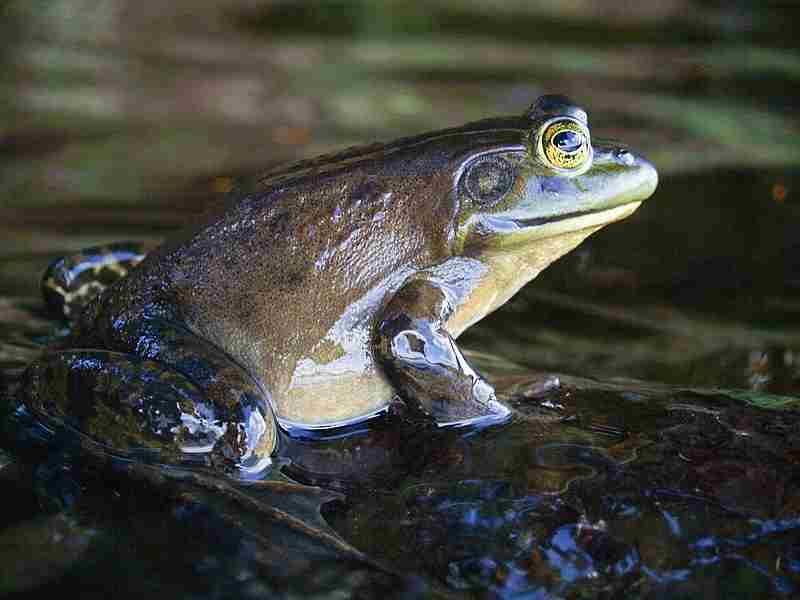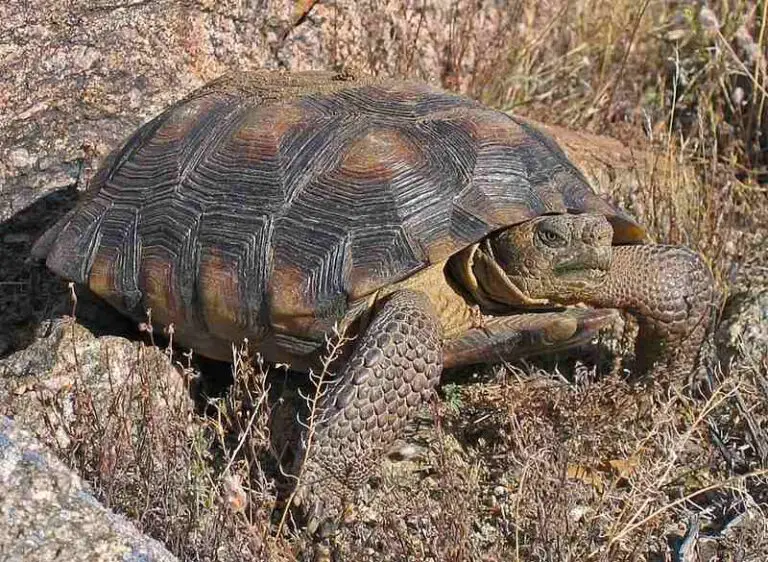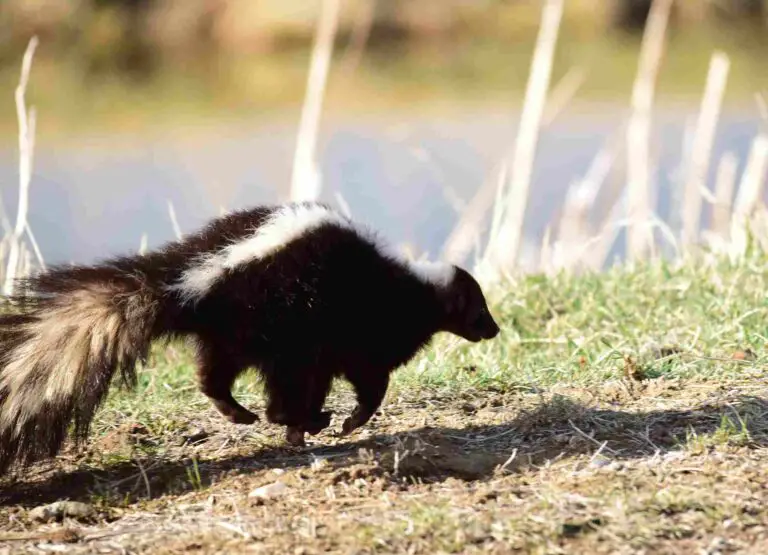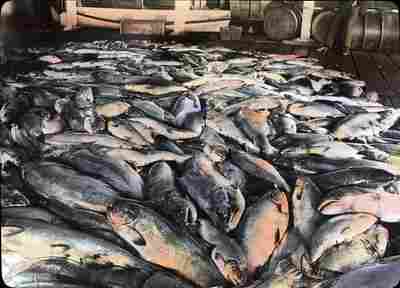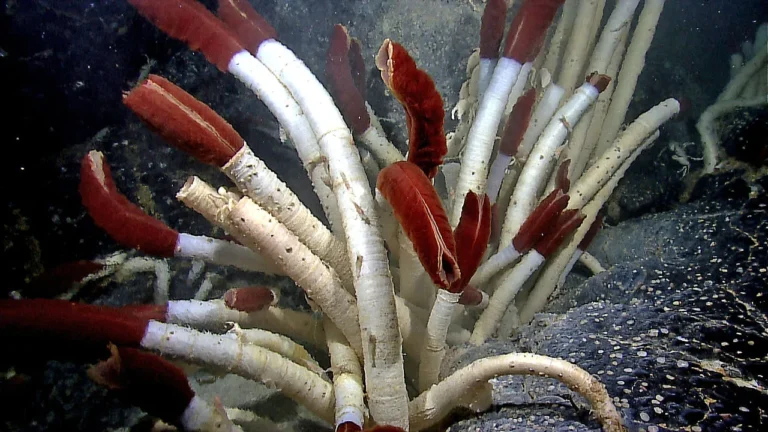5 Biotic Factors in Freshwater Ecosystems and Their Characteristics Discussed
Biotic factors in freshwater ecosystems are; autotrophs, herbivores, carnivores, omnivores and decomposers; as well as the trophic relationships occurring among these organic groups.
This article discusses biotic factors in freshwater ecosystems and their characteristics, as follows;
1). Freshwater Autotrophs (as one of the Biotic Factors in Freshwater Ecosystems)
Freshwater autotrophs are a group of photosynthetic organisms which have the ability to produce their own food and biomass, using inorganic raw materials like carbon dioxide, water and solar radiation [12].
These organisms constitute the basal level or foundation of freshwater biomes through their activities that convert visible light from the Sun into organic compounds, thereby supporting the entire freshwater food chain/web.
Categories and Examples of Autotrophs in Freshwater Ecosystems
Autotrophs in freshwater biomes are broadly grouped into two major categories; aquatic macrophytes and phytoplankton.
1. Aquatic Macrophytes in Freshwater
Aquatic macrophytes are plants that are relatively large and have true roots; which can be found growing in freshwater habitats like wetlands, rivers, lakes and ponds [5].
These plants have a crucial role to play in sediment stabilization, underwater-erosion mitigation, as well as provision of food and microhabitat for various freshwater organisms.
They also contribute to oxygen cycling, carbon sequestration, and water quality maintenance. Aquatic macrophytes may be distinguished into; submergent, floating, and emergent plants, with each group having specialized adaptations.
Examples of aquatic macrophytes in freshwater are; water milfoil, water lilies, and cattails.
Water milfoil is a submergent freshwater plant which possesses dissected or feathery leaves that serve as shelter for some invertebrates; fish and other aquatic organisms [15]. It contributes to water quality maintenance, as well as to species richness and biodiversity.

Water lilies are floating aquatic plants whose features include rounded, broad leaves and large flowers. They also serve as shelter, shade, and a source of food for multiple aquatic organisms.
Cattails are emergent aquatic plants with a tall build and slender, long leaves, as well as brown, distinctive seed heads. These plants contribute to the recycling of nutrients in their habitat, and provide shelter to organisms.
2. Phytoplankton as Autotrophs/Biotic Factors in Freshwater Ecosystems
Phytoplankton are a group of free-floating, microscopic autotrophs that occur usually as drifters along the surface of freshwater bodies.
They are prominent as primary producers in many aquatic ecosystems, and account for a significant portion of overall global oxygen production.
Phytoplankton include algae of various types, like green algae; cyanobacteria and diatoms. They are crucial toward carbon sequestration; food provision, and nutrient cycling in the freshwater food web.
Examples of Phytoplankton in Freshwater Ecosystems
Examples of phytoplankton in freshwater are; cyanobacteria, green algae and diatoms.
Cyanobacteria are a group of photosynthetic bacteria that tend to form large blooms in freshwater bodies, and play a role in atmospheric nitrogen fixation.
Green algae are colonial or single-celled algae that play a role in the production of oxygen, and serve as food sources for aquatic herbivores.
Diatoms are microscopic algae that are characterized by intricate cell walls composed of silica [7], and which play a critical role in both nutrient cycling and oxygen production.
*Status of Autotrophs as Biotic Factors in Freshwater Ecosystems
Autotrophs are indeed biotic factors in freshwater ecosystems. This is because they are living organisms and influence the biological dynamics as well as functioning of the ecosystem.
*Biotic Factors and Survival of Freshwater Plants
One biotic factor that helps freshwater plants to survive is the occurrence and activities of decomposers.
Decomposers, like fungi and bacteria, help breakdown organic matter such as animal and plant remains, as well as waste. This process of biodegradation releases nutrients back into the water column, so that they become available for uptake by plants.
Nutrient recycling by decomposers is important toward maintaining the necessary nutrient balance for the survival and growth of freshwater plants.
Summary of Discussion on Autotrophs as Biotic Factors in Freshwater Biomes
Freshwater autotrophs like aquatic macrophytes and phytoplankton, play a crucial role in their habitat.
They function as primary producers, capturing and converting solar energy to organic compounds, providing microhabitat and food for other aquatic organisms, and also contributing to water quality and nutrient cycling. The presence of autotrophs is vital for the functioning and overall sustainability, of freshwater ecosystems.
2). Freshwater Herbivores
Freshwater herbivores are organisms inhabiting freshwater bodies, whose diet primarily consists of plant materials that serve as their source of nutrients and energy.
These organisms play an important role in regulating the distribution and growth of vegetation in aquatic environments, and also contribute to the overall functioning and balance of these habitats.
Categories/Classification and Examples of Freshwater Herbivores
Freshwater herbivores are classified into four main categories; fish, amphibians, reptiles and invertebrates.
1. Herbivorous Fish in Freshwater Ecosystems
Several species of fish in freshwater ecosystems have evolved and adapted so that they are able to consume plant material as a primary food source.
Accordingly, these fish species are classified as primary consumers, and possess specialized mouthparts as well as dentition, which they use to graze on aquatic macrophytes and algae.
Examples of Herbivorous Fish in Freshwater Ecosystems
Examples of freshwater herbivorous fish are; silver carp and grass carp.
Silver carp are filter-feeders [9] that are capable of consuming significant amounts of phytoplankton, and exert indirect influence of nutrient availability for aquatic plants.
Grass carp are also known to consume large quantities of aquatic plants, so that they help prevent harmful overgrowth of vegetation in water bodies.
2. Amphibians as Herbivores/Biotic Factors in Freshwater Ecosystems
Herbivorous amphibians are not a diverse group compared to herbivorous fish and invertebrates in freshwater ecosystems. However, they are represented by some individuals which feed on plant material in aquatic habitats.
Green frog is example of a herbivorous amphibian in freshwater ecosystems.
Green frogs consume aquatic vegetation and algae; a dietary pattern that is especially notable during their larval stage [3]. As a result, they contribute to the regulation of algae growth and the cycling of nutrients.
3. Herbivorous Freshwater reptiles
Turtles that occur in rivers, lakes and ponds are an example of herbivorous freshwater reptiles; and often graze on aquatic vegetation.
4. Herbivorous Freshwater Invertebrates
Invertebrates are a diverse group of animals that have no backbone.
Several aquatic invertebrates inhabiting freshwater biomes, are herbivorous.
These organisms vary in feeding habits and morphological attributes, and range from microscopic to macroscopic grazers and browsers.
Examples of Herbivorous Freshwater Invertebrates
Examples of herbivorous freshwater invertebrates are; shrimps, snails and water fleas.
Some species of freshwater shrimps, like the Amano shrimp, feed on plant litter and algae, by which they contribute to energy transfer and nutrient-cycling in the food chain.
Pond snails and ramshorn snails are examples of freshwater snails that can be described as herbivorous by reason of the presence of significant amount of algae in their diet.
They may also feed on detritus, and help to control algal growth in their habitat.
Water fleas include small crustaceans like Daphnia [13], are grazers in freshwater habitats, and may consume cyanobacteria and algae.
Summary on Herbivores in Freshwater Habitats
The presence of herbivores in freshwater is important for controlling the rate of algal blooming, maintaining the equilibrium of aquatic plant communities, and facilitating the cycling of nutrients.
Consuming plant material enables these organisms to play a role in preventing overgrowth of aquatic vegetation, which can cause harmful depletion of essential resources like oxygen, other nutrients, and light.
Herbivores also contribute to the decomposition of organic matter, and the recycling of nutrients through processes like feeding and excretion.
Lastly, herbivorous organisms are useful as a food source for consumers in higher trophic levels, including freshwater carnivores
3). Freshwater Carnivores (as one of the Biotic Factors in Freshwater Ecosystems)
Freshwater carnivores are aquatic organisms that feed mainly on other animals, which serve as their primary source of nutrients and energy.
These organisms play an important role in the food web by controlling prey populations, and influencing the dynamics of the aquatic community.
Categories and Examples of Freshwater Carnivores
Freshwater carnivores may be classified into three main categories: invertebrates, fish, and amphibians.
1. Invertebrate Carnivores in Freshwater Biomes
Invertebrate carnivores in freshwater biomes, are a diverse group, whose characteristics include diverse feeding strategies and physiological adaptations.
These organisms may function predators, parasites or scavengers, or parasites, and consume a variety of prey; such as small vertebrates, and other invertebrates.
Examples of Invertebrate Carnivores in Freshwater Biomes
Examples of invertebrate carnivores in freshwater ecosystems are; water spiders, water beetles and dragonfly nymphs.
Water spiders build underwater retreats out of silk, capturing other organisms that come in contact with their webs, including zooplankton and small aquatic insects.

Water beetles are voracious predatory organisms that consume small fish, tadpoles and insects [6].
Dragonfly nymphs are predators in freshwater ecosystems, that actively hunt, capture and consume small invertebrates like small crustaceans and mosquito larvae.
2. Carnivorous Fish in Freshwater Ecosystems
Freshwater fish possess diverse feeding habits.
Several species are carnivorous, and prey on other fish, invertebrates, and small vertebrates (including other fish).
Examples of Carnivorous Freshwater Fish
Examples of carnivorous freshwater fish are; catfish, pike and bass.
Some catfish species, like the flathead catfish, have opportunistic predatory habits, and consume invertebrates such as crustaceans, as well as small fish.
Pike is a predatory fish with sharp teeth and a long, slender body. Its food includes a variety of prey, such as small mammals, frogs, and other fish.
Bass fish, including smallmouth bass and largemouth bass, are active predators [14] that feed on various prey items, including insects, amphibians and smaller fish.
3. Carnivorous Amphibians in Freshwater Ecosystems
Although amphibians are mostly associated with insectivorous and herbivorous feeding habits, some species of amphibians are carnivorous, and consume invertebrates or other vertebrates.
Some species of salamanders like the hellbender, are known to be opportunistic predators [4] and feed on crustaceans and small fish, among other organisms.
Summary on the Importance of Carnivores as Biotic Factors in Freshwater Ecosystems
Freshwater carnivores are important due to their role in regulating the ecosystem, by controlling prey populations, and contributing to overall ecologic balance of organic communities in their habitat.
They control the species richness and abundance of prey, while maintaining biodiversity and preventing overpopulation.
Also, they play an important role in energy transfer within the freshwater food web, by converting stored energy in their prey, into chemical resources for their own metabolism.
Through predatory activities, freshwater carnivores contribute immensely to the cycling of nutrients, and the maintenance of the overall functioning and health of freshwater ecosystems.
4). Freshwater Omnivores
Freshwater omnivores are a group of versatile organisms with a flexible diet, that consume both animal and plant matter biomass.
They have a crucial role to play in freshwater ecosystems, because of their contribution to trophic relations and nutrient cycling.
Freshwater omnivores occur in various taxonomic groups, including invertebrates, amphibians and fish.
1. Invertebrate Freshwater Omnivores
Invertebrate omnivores in freshwater ecosystems, exhibit diverse feeding strategies, and are capable of consuming both animal and plant material.
Examples of Invertebrate Freshwater Omnivores
Examples of freshwater invertebrate omnivores are; water bugs, freshwater snails and crayfish.
Water bugs like the water boatmen, are consumers of both plant and animal matter. Their food includes small invertebrates and algae.
Some freshwater snail species are also omnivorous, and feed on small vertebrates, algae, and detritus.
Crayfish are opportunistic in their feeding habits, and consume a diverse food sources, including detritus, small invertebrates and plant matter.
2. Omnivorous Amphibians in Freshwater Ecosystems
Some amphibians in freshwater ecosystems have omnivorous feeding habits, and consume both small invertebrates and plant matter.
Examples of Omnivorous Freshwater Amphibians
Examples of omnivorous amphibians in freshwater ecosystems are newts and frogs.
Some newt species have a very diverse diet which comprises of worms, insects, and plant material.
Also, some species of frogs like bullfrogs, are opportunistic omnivores (especially in their tadpole stage [10]) and consume various food items including small fish, worms, plant matter and insects.

3. Omnivorous Freshwater Fish
Certain freshwater fish species possess omnivorous feeding habits that allow them to adapt to various, available food resources in their environment.
Examples of Omnivorous Freshwater Fish
Examples of omnivorous freshwater fish are; sunfish, carp and tilapia.
Sunfish like pumpkinseed and bluegill, have a flexible diet that consists of crustaceans, insects, small fish, and aquatic plants.
Some species of carp are opportunistic feeders and can feed on a wide range of food sources, including insects, detritus, crustaceans and aquatic plants.
Tilapia are also omnivorous and consume small invertebrates, aquatic plants and algae, as well as detritus.
Summary on Omnivores in Freshwater Biomes
Freshwater omnivores play roles in energy transfer and nutrient cycling, within freshwater ecosystems.
By feeding on both plant and animal matter, they serve as links in the food web that connect primary producers to organisms in higher trophic levels.
They help regulate the abundance of primary producers, including aquatic plants and algae, and also contribute to the decomposition of organic matter through their feeding activities.
Lastly, the feeding habits of freshwater omnivores can influence the abundance and spatial distribution prey organisms, and may impact the dynamics and structure of entire freshwater communities.
5). Freshwater Decomposers (as one of the Biotic Factors in Freshwater Ecosystems)
Freshwater ecosystems play host to various decomposers that are crucial for the breakdown/biodegradation of organic matter, as well as the subsequent recycling of nutrients.
These decomposers are responsible for the decay of organic waste and remains, so that they facilitate nutrient cycling, and maintain overall health of the ecosystem.
Categories and Examples of Decomposers in Freshwater Ecosystems
The main categories of decomposers in freshwater are; fungi, bacteria and detrivores.
1. Fungi in Freshwater Ecosystems
Fungi are an important group of decomposers that can be found in freshwater ecosystems.
They cause the breakdown of complex organic compounds like lignin and cellulose, that are resistant to degradation by other decomposers [1].
Fungi play a critical role in the biodegradation of plant material, and contribute to the recycling of nutrients in their habitat.
An example of fungi in freshwater ecosystems is aquatic hyphomycetes.
Aquatic hyphomycetes are fungi that can be found growing on dead (decaying) leaves as well as wood litter/debris in rivers and streams and rivers, and also sporulate under water [2].
2. Bacteria in Freshwater Ecosystems
Bacteria are also primary decomposers in freshwater ecosystems, alongside fungi.
They are diverse and abundant, and play a critic role in the breakdown of organic matter.
Bacteria facilitate the decomposition of complex organic compounds and their conversion to simpler products; in a process that releases nutrients back into the ecosystem.
Examples of bacteria (decomposers) in freshwater are; anaerobic and aerobic bacteria.
Anaerobic bacteria are species which thrive in oxygen-depleted/anoxic environments, such as waterlogged areas and deep sedimentary layers [8]. They are able to operate efficiently and break down organic matter in the absence of significant oxygen-supply.
Aerobic bacteria require significant amounts of oxygen for their metabolic activities, and are involved in the breakdown of organic matter in oxygen-rich environments, such as in shallow sedimentary layers and in the lotic water column.
3. Detritivores as a Group of Decomposers/Biotic Factors in Freshwater Ecosystems
Detritivores are organisms which feed on, and facilitate the breakdown of organic matter.
While they do not necessarily oversee the entire breakdown of such organic materials, detrivores are known to accelerate the decomposition process.
Examples of these organisms include invertebrates that actively consume organic remains and waste, in the form of dead plants and general organic detritus.
Freshwater snails and aquatic worms are two organisms that can be classified as detrivores.
Freshwater snails are omnivorous; and may be categorized also as detrivores, because they feed on detritus and decaying plant matter, and help facilitate the process of decomposition.
Various species of aquatic worms in freshwater biomes; such as oligochaete-tubificid worms [11], feed on sedimentary organic matter and play a role in the breakdown of such materials, and subsequent release of nutrients.
Summary on Decomposers in Freshwater Ecosystems
Decomposers in freshwater ecosystems play a vital role in the breakdown of organic matter, maintenance of ecological balance, and recycling of nutrients.
By decomposing organic materials, they help release nutrients back into the water column, and make these nutrients available for subsequent uptake by primary producers.
Decomposers also play a role in preventing the accumulation of harmful (toxic and pathogenic) organic waste, and also contribute to the nitrogen, oxygen and carbon cycles in their habitat.
Trophic Relationships in Freshwater Ecosystems
In a freshwater ecosystem, trophic relationships are simply the feeding relationships/interactions that occur among various organisms, that lead to the transfer of nutrients and energy across the trophic levels of the food chain.
These relationships are responsible for defining the trophic levels, which are a group of hierarchical levels representing the relative roles and positions of organisms in the sequence of energy transfer.
The trophic levels present in freshwater ecosystems are; primary producers (level 1), primary consumers (level 2), secondary consumers (level 3), and tertiary consumers (level 4).
*Primary Producers (Autotrophs) in Freshwater Ecosystems
The first trophic level is occupied by primary producers, which typically include algae, photosynthetic bacteria and aquatic vascular plants.
These organisms transform water, carbon dioxide and sunlight into organic matter, through the process of photosynthesis.
They constitute the base/lowest level of the food chain, and serve as the primary source of energy for other organisms in the ecosystem.
*Primary Consumers (Herbivores) in Freshwater Ecosystems
Primary consumers are herbivorous organisms which directly feed on the primary producers.
They obtain nutrients and energy by consuming algae, aquatic plants, or plant litter/detritus.
Examples of freshwater primary consumers are; small fish, tadpoles, mollusks, and zooplankton.
*Secondary Consumers (Carnivores) in Freshwater Ecosystems
Freshwater secondary consumers are organisms with carnivorous habits, that feed mainly on the primary consumers.
They obtain their own energy by consuming herbivores like mollusks and zooplankton.
Examples of freshwater secondary consumers are; predatory insects, some reptiles, amphibians (like frogs) and larger fish.
*Tertiary Consumers (Apex Predators) in Freshwater Ecosystems
Tertiary consumers are apex predators that usually occupy the highest trophic level, and feed on other consumers.
They are typically larger and/or more advanced predators that use their biological advantage to operate with utmost influence over the entire feeding hierarchy. Tertiary consumers are only exceeded by quaternary consumers, which occur in ecosystems with a high level of biodiversity and organic abundance.
Examples of freshwater tertiary consumers are; aquatic birds, large fish, mammals like river dolphins and North American river otters, as well as reptiles like crocodiles.

*Decomposers (Detritivores)
Decomposers have a vital role to play in the breakdown of organic matter, and recycling nutrients.
These organisms obtain their energy by feeding on organic waste, dead plants and animals; in the process releasing essential nutrients like nitrogen to the ecosystem.
Examples of freshwater decomposers are; fungi, detrivorous invertebrates (some insects, worms) and bacteria.
Biotic Limiting Factors in Freshwater Ecosystems
Biotic limiting factors in freshwater ecosystems, are living/organic factors which are capable of can affecting the survival, spatial distribution, and growth of organisms.
Some examples of biotic limiting factors in freshwater are; predation, parasitism and disease, competition, symbiosis and mutualism.
1. Predation as a Biotic Limiting Factor in Freshwater Ecosystems
Predation is a biotic limiting factor because predators can influence the distribution and population sizes of prey species.
The presence of thee predators may limit the distribution and abundance of certain organisms within the ecosystem that serve as their prey.
2. Parasitism and Disease
Parasites and diseases can significantly affect the survival and wellbeing of organisms in a freshwater habitat.
They are capable of causing population declines, and can alter the balance of species and trophic interactions.
3. Competition as a Biotic Limiting Factor in Freshwater Ecosystems
Organisms (especially within the same trophic level) may compete for resources lie space, mates, and food.
Competition tends to influence population sizes, and also limits the availability of resources for certain freshwater species.
4. Symbiosis and Mutualism
Mutually-beneficial relations occur between some species in freshwater ecosystems, such that all organisms involved may benefit from these interactions.
Mutualistic relationships can affect the survival rate, of the organisms involved.
Conclusion
Biotic factors in freshwater ecosystems are;
1. Freshwater Autotrophs
2. Freshwater Herbivores
3. Freshwater Carnivores
4. Freshwater Omnivores
5. Freshwater Decomposers
... as well as Trophic Relationships in Freshwater Ecosystems
References
1). Andlar, M.; Rezic, T.; Mardetko, N.; Kracher, D.; Ludwig, R.; Božidar - Šantek (2018). "Lignocellulose degradation: An overview of fungi and fungal enzymes involved in lignocellulose degradation." Engineering in Life Sciences 18(11). Available at: https://doi.org/10.1002/elsc.201800039. (Accessed 14 July 2023).
2). Baerlocher, F. (1992). "Research on Aquatic Hyphomycetes: Historical Background and Overview." Available at: https://doi.org/10.1007/978-3-642-76855-2_1. (Accessed 13 July 2023).
3). Baffico, G. D.; Ubeda, C. (2006). "Larval diet of the frog Alsodes gargola (Leptodactylidae: Telmatobiinae) and some ecological considerations on its role in alpine and mountain aquatic environments in Patagonia." Amphibia-Reptilia 27(2):161-168. Available at: https://doi.org/10.1163/156853806777239986. (Accessed 14 July 2023).
4). Browne, R. K.; Wang, Z.; Okada, S.; Hime, P.; McMillan, A.; Wu, M.; Diaz, R. E.; McGinnity, D.; Briggler, J. T. (2014). "The giant salamanders (Cryptobranchidae): Part B. Biogeography, ecology and reproduction." Amphibian and Reptile Conservation 5(4):35-50. Available at: https://www.semanticscholar.org/paper/The-giant-salamanders-(Cryptobranchidae)%3A-Part-B.-Browne-Hong/dae8844d2a48197f5775fce13464ae9479d28fc3. (Accessed 14 July 2023).
5). De, M.; Roy, C.; Medda, S.;Roy, S.; Dey, S. R. (2019). "Diverse role of Macrophytes in aquatic ecosystems: A brief review." Available at: https://doi.org/10.52756/ijerr.2019.v19.005. (Accessed 14 July 2023).
6). Gould, J.; Valdez, J. W.; Clulow, J.; Clulow, S. (2019). "Diving beetle offspring oviposited in amphibian spawn prey on the tadpoles upon hatching." Available at: https://doi.org/10.1101/666008. (Accessed 14 July 2023).
7). Hildebrand, M.; Lerch, S. J. L.; Shrestha, R. (2018). "Understanding Diatom Cell Wall Silicification—Moving Forward." Frontiers in Marine Science 5. Available at: https://doi.org/10.3389/fmars.2018.00125. (Accessed 14 July 2023).
8). Liesack, W.; Schnell, S.; Revsbech, N. P. (2000). "Microbiology of flooded rice paddies." FEMS Microbiol Rev. 2000 Dec;24(5):625-45. Available at: https://doi.org/10.1111/j.1574-6976.2000.tb00563.x. (Accessed 14 July 2023).
9). Ma, H.; Cui, F.; Liu, Z.; Fan, Z.; He, W.; Yin, P. (2010). "Effect of filter-feeding fish silver carp on phytoplankton species and size distribution in surface water: A field study in water works. Journal of Environmental Sciences." Journal of Environmental Sciences 22(2):161-7. Available at: https://doi.org/10.1016/S1001-0742(09)60088-7. (Accessed 14 July 2023).
10). Mansano, C. F. M.; De Stéfani, M. V.; Pereira, M. M.; Nascimento, T. R.; Macente, B. (2014). "Morphometric growth characteristics and body composition of bullfrog tadpoles in captivity." SEMINA: CIENCIAS AGRARIAS 35(5):2817. Available at: https://doi.org/10.5433/1679-0359.2014v35n5p2817. (Accessed 14 July 2023).
11). Mariom; Mollah, M. (2013). "Effects of Culture Space on the Production of Tubificid Worms (Oligochaeta, Naididae)." Available at: https://www.asianfisheriessociety.org/publication/abstract.php?id=effects-of-culture-space-on-the-production-of-tubificid-worms-oligochaeta-naididae. (Accessed 14 July 2023).
12). Pedersen, O.; Colmer, T. D.; Sand-Jensen, K. (2013). "Underwater photosynthesis of submerged plants - recent advances and methods." Front Plant Sci. 2013 May 21;4:140. Available at: https://doi.org/10.3389/fpls.2013.00140. (Accessed 14 July 2023).
13). Stollewerk, A. (2010). "The water flea Daphnia--a 'new' model system for ecology and evolution?" J Biol. 2010;9(2):21. Available at: https://doi.org/10.1186/jbiol212. (Accessed 14 July 2023).
14). Tabor, R. A.; Footen, B.; Fresh, K. L.; Celedonia, M. T.; Mejia, F.; Low, D. L.; Park, L. (2007). "Smallmouth Bass and Largemouth Bass Predation on Juvenile Chinook Salmon and Other Salmonids in the Lake Washington Basin." North American Journal of Fisheries Management 27(4):1174-1188. Available at: https://doi.org/10.1577/M05-221.1. (Accessed 14 July 2023).
15). Ward, D.; Newman, R. M. (2006). "Fish predation on Eurasian watermilfoil ( Myriophyllum spicatum ) herbivores and indirect effects on macrophytes." Canadian Journal of Fisheries and Aquatic Sciences 63(5):1049-1057. Available at: https://doi.org/10.1139/F06-010. (Accessed 14 July 2023).
